Ghost Ants vs Sugar Ants
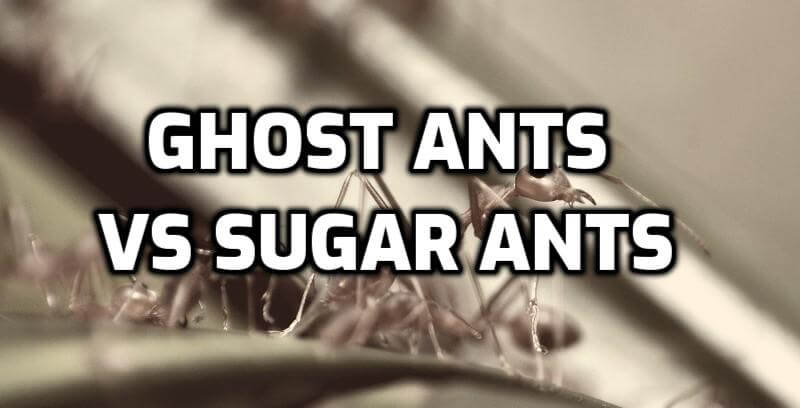
Have you been trying to identify the type of ant you’re dealing with, so you can come up with an effective solution? There are two common types of ants that infest homes: ghost ants and sugar ants.
In this article, we’ll look at the biology and habits of these two pests, so you can take steps to get rid of them. We’ll also look at prevention tips and the importance of calling professional exterminators. Let’s get started!
Ghost Vs Sugar Ants
Ghost Ants | Sugar Ants |
Scientific Name Tapinoma Melanocephalum | Scientific Name Camponotus Consobrinus |
Dark Head & Thorax | Dark Brown To Shiny Black |
Pale Abdomen 6 Legs | Sugar Ant Larger Than Many Other Ants |
Size 1/16th Inch Long | Size 1/8 inch in Length |
Has Antennae | Has Antennae |
Ghost Ants Are Partial To Sweet Foods | Sugar Ants Seek Out Sweets Of All Kinds |
Attracted To Moisture, Warmth, Sweet And Greasy Foods | All Ants Live In Colonies And Rarely Travel Alone |
Ghost Ants Cannot Sting, But They Can Bite | They Do Not Have Stingers And Do Not Bite Humans |
Biology of Ghost Ants
Lurking in the shadows, these tiny critters boast impressive biology. Ghost ants are small in size and have a distinctive two-toned color pattern. They have a light-colored head and thorax and a darker-colored abdomen.
While equipped with formidable mandibles, they typically feed on small insects and other arthropods. They’re also equipped with a sting, though it’s rarely used.
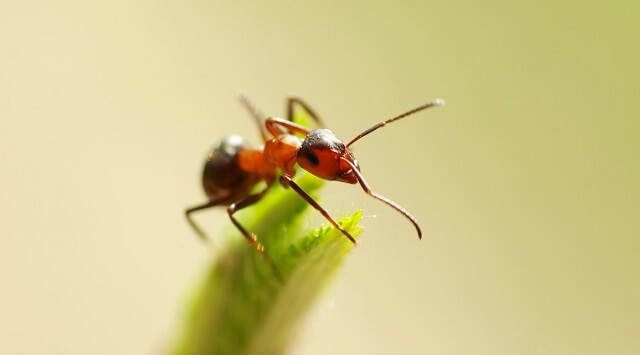
Ghost ants are found in tropical and subtropical regions worldwide and love to nest in dark and damp areas. In the wild, colonies of these ants can be quite large, consisting of multiple queens, workers, and soldiers. They’re also highly social, and their colonies are well-organized.
They can be challenging to control, as they can quickly move from one location to another. So, if you’re looking for a way to liberate your home from these pesky critters, you may have to be creative.
Habits of Ghost Ants
The habits of these nocturnal insects are intriguing. While known to be quite different from their daily counterparts, ghost ants are quite active. They often venture out searching for food at night and prefer sugary substances like honeydew. They are more likely to feed during the evening hours.
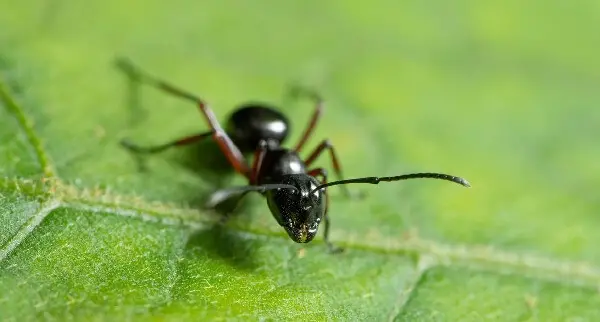
Ghost ants forage in large groups and often travel farther than their daily counterparts in search of food. They typically travel in long trails of thousands of ants stretching for miles. These trails often lead to areas that are distant from their nest. Ghost ants are also aggressive and will vigorously defend their nest if disturbed.
Biology of Sugar Ants
You can often find sugar ants traveling in long trails, searching for sweet sugary food to feast on. These industrious insects are pretty small, usually measuring between 3 and 5 millimeters in size. They have six legs, long antennae, and a constriction between the thorax and abdomen. The color of these ants can range from yellow to red to dark brown.
Sugar ants have two main life cycles. They can either be winged or wingless. Winged ants, also known as alates, are in the reproductive phase of the species. They begin their lives as larvae, later developing into winged adults that mate and disperse to start new colonies.
The wingless ants are the workers responsible for gathering food for the colony. They are also responsible for feeding the larvae and cleaning the nest.
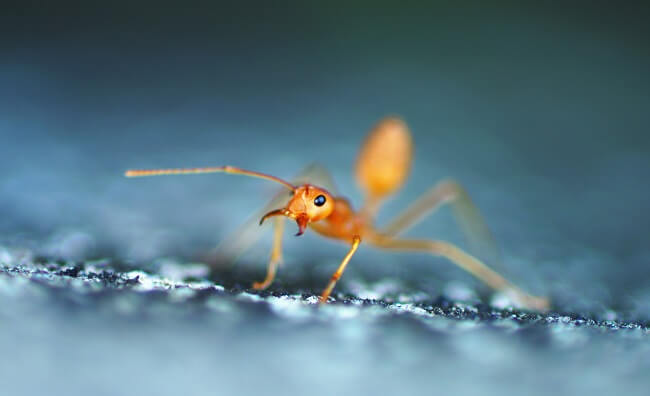
Sugar ants are generally considered a nuisance, but they can benefit gardens and other outdoor areas by consuming dead insects and plant material.
Habits of Sugar Ants
You’ll often find sugar ants scurrying around, searching for their sweet sugary treat, and working together to build a strong colony.
Sugar ants are highly social insects, meaning they work together to build and maintain the colony. They are also known for their large colonies, ranging from hundreds to thousands of ants.
Sugar ants typically live in soil or wood and prefer to build their nests in dark, damp places. Sugar ants have a distinct set of behaviors that help them survive.
For starters, they have a strong sense of smell, which helps them find food sources and scout out potential nesting sites. They also use a chemical communication system known as pheromones to signal danger and alert other ants of potential threats.
Sugar ants also possess a unique ability to adapt to changes in their environment, such as climate or food availability. This helps them survive in harsh conditions and find food sources in new areas.
Ant Control Methods
If you’re dealing with pesky ants, there are several methods you can use to get rid of them.
One of the most effective methods is to use an insecticide that can be sprayed in areas where the ants are located. This can help to kill off the existing population and discourage new ants from entering the area.
Additionally, you may want to consider setting bait traps near the ant colonies. These traps contain a sweet substance that the ants will be attracted to, but it’s poisoned and will kill the ants upon consumption.
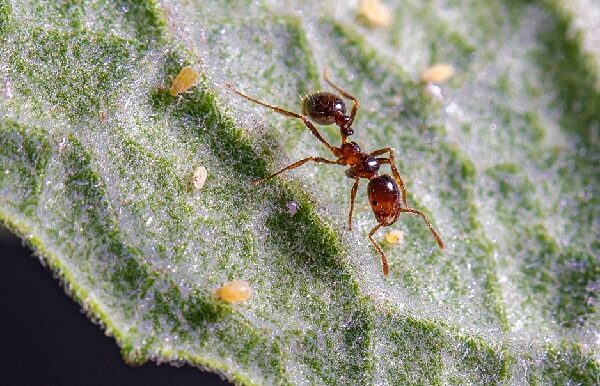
You can also try more natural methods to eliminate ants, such as diatomaceous earth or boric acid. These substances are non-toxic but can be just as effective as insecticides in killing off ant colonies.
It’s important to note that using ant control methods may take some time to see results, so it’s important to be patient and persistent. With the right method, you can get rid of those pesky ants and reclaim your home!
Prevention Tips
Preventing ant infestations is crucial; taking proactive steps can ensure your home or business remains ant-free. Regularly inspect the exterior for accessible entry points, like gaps around windows, doors, and utility lines. Use caulk or sealants to block these openings.
Remove any sources of food or water that could attract ants. Clean up food and drink spills and store food in airtight containers. Keep areas around food preparation clean and free of debris. Finally, empty any drains or traps to avoid creating a moist environment to which ants may be drawn.
By taking these steps, you can prevent ant infestations and protect your home or business from these pesky insects.
Professional Exterminators
Professional exterminators can be an excellent resource for eliminating existing ant colonies, as they have the expertise and equipment necessary to get rid of the problem effectively. With their help, you can find relief from your ant infestation quickly and with minimal effort on your part.
Professional exterminators possess powerful insecticides that eliminate the ants and have detailed knowledge of where the ants are likely to be hiding and how to get rid of them effectively. Professional exterminators can also help you to prevent future infestations by sealing off any entryways the ants may be using and properly disposing of any food that may be attracting them.
In the long run, preventive measures allow you to keep your home free of ghosts and sugar ants. Exterminators can also conduct regular inspections to ensure your home is ant-free and can advise on how to keep it that way.
Conclusion
You’ve learned the differences between ghosts and sugar ants and how to control them best. Both types of ants can be a nuisance if not dealt with properly, but with suitable methods, you can control them.
Prevention is the key to keeping ants away. Regularly checking your home for signs of ant infestation, sealing off entry points, and using natural solutions can help keep your home ant-free.
If you’re still struggling with an ant infestation, contacting a professional exterminator is best. With the right knowledge and tools, you can keep your home pest-free.

James E. Butkovich, Pest control maven with a knack for eco-friendly & Chemical solutions. Blogger with a mission to make homes pest-free, one post at a time.

